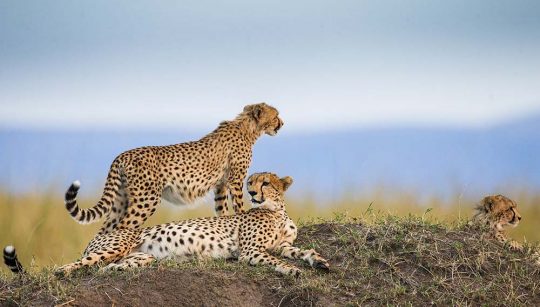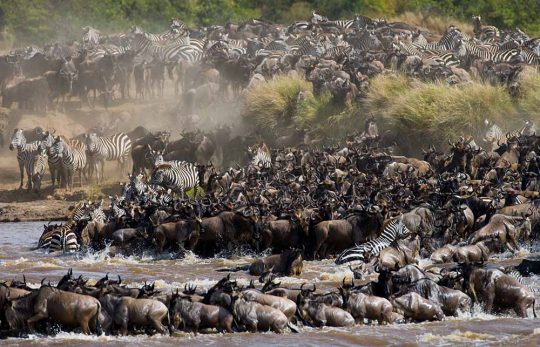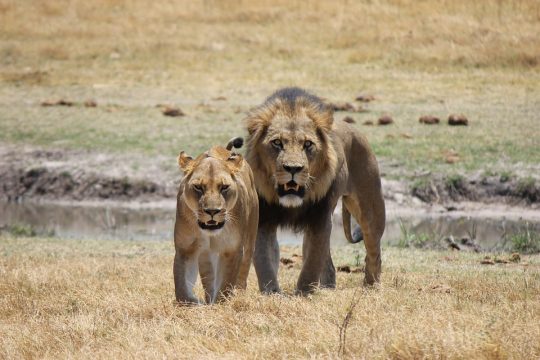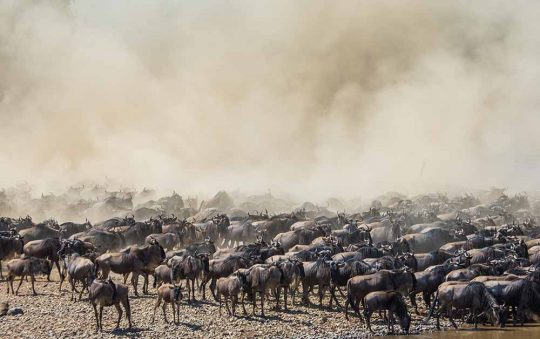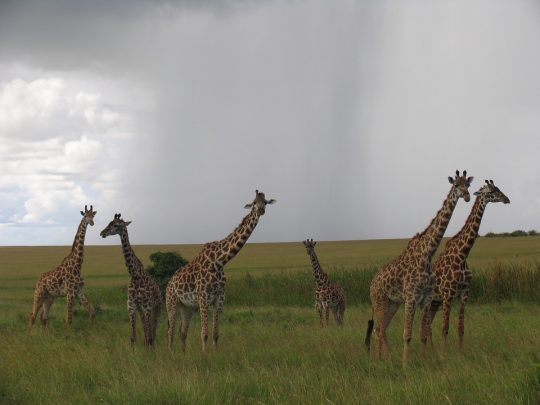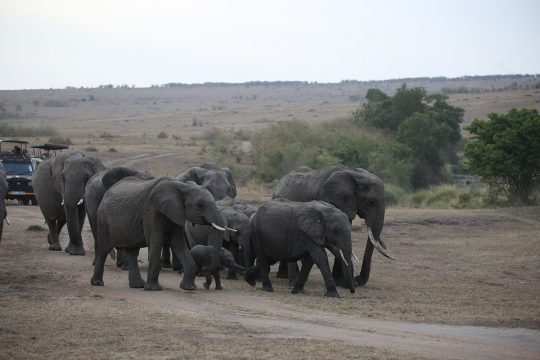Are you thinking to go visit Maasai Mara?
Talk to our experts about the perfect planning for your holiday.
Error: Contact form not found.
- About Maasai Mara
- Interesting facts about Maasai Mara
- Best Time to Visit Maasai Mara
- Things to see in Maasai Mara
- How to get to Maasai Mara
- Where to Stay in Maasai Mara
- Weather & Climate
Welcome to Maasai Mara Game Reserve! It’s, without a doubt, one of the most renowned wildlife reserves in the world.
About Kenya
Kenya is a country situated on the eastern coast of the African continent. With a varied geography and much of northeastern bush-covered plains, the rest of the country consist of pristine beaches, scenic highlands and lake regions, a good portion of the Great Rift Valley, and the magnificent Mount Kenya. Kenya is one of the finest, and possibly the most famous safari destination in the world. But safari by no means the only reason to visit Kenya, for the attractions of its rich culture and diverse environments are considerable.
About Maasai Mara
Maasai Mara is one of the most renowned wildlife reserves in the world, and one of the reasons why Kenya is ultimate safari destination. Being a scene of the great annual migration, when millions of wildebeest, zebras and other grazers start their journey toward Tanzania’s green pastures certainly makes it spectacular destination for visit.
There are several exciting activities you can enjoy in Maasai Mara, and the most exciting is Hot Air Balloon safari, taken at the break of dawn and ending with a leisurely ‘Champagne Bush Breakfast’. The tour takes about an hour as you glide over the African savanna watching the magnificent wildlife below. Another popular experience is visiting a traditional tribal Maasai village which allows you insight into the unique way of life of the nomadic warrior tribe. You can also do nature walks, bush meals and sundowners as some of the other popular things to do in Maasai Mara.
Maasai Mara – Interesting Facts
Maasai Mara National Reserve is one of the largest game reserves in Kenya, widely considered to be Africa’s greatest wildlife reserve (also known as Masai Mara and by the locals as The Mara). Maasai Mara National Reserve stretches 1,510 square kilometers (580 square miles) and raises 1,500-2,170 meters (4920-7120 feet) above sea level. Contiguous with the plains of the Serengeti, the Mara is home to a breathtaking array of life.
The Mara Game Reserve is known all over the world for a wide range of wild animals such as the ” big five ” (lion, leopard, African elephant, cape buffalo, and black rhinoceros) and other popular species like zebra, giraffe, hyena, cheetah, wildebeest, eland and Thomson’s gazelle.
Amazing Wildlife
First designated as a conservation area in 1961, Maasai Mara National Reserve is regarded as year round safari destination as it offers more or less ideal climate with an abundance of wildlife for excellent game viewing throughout the calendar year. The Mara is home to the big five as well as the Big Nine African animals (lion, leopard, elephant, cape buffalo, and rhinoceros) along with more than 400 bird species identified in the park, many of which are migranting species and with almost 60 species being raptors. Click here to read more about Maasai Mara Animals and Wildlife
Great Wildebeest Migration
Great Wildebeest migration has been selected as one of the seven natural wonders of the World and takes place every year between late July to end of September, though this timing can vary somewhat due to prevailing rainfall patterns. During these months the yellow savannah is dotted black by more than 1.5 million wildebeest, zebra and antelopes that migrate from the Serengeti northwards into the Masai Mara in search of food and water, and as part of their mating and birth cycles.
Lions
Though there are many fascinating animals to be found in Masai Mara, sighting the Lions is often the highlight of a safari game drive and most tourists if not all have Lions on top of their wildlife spotting check list when visiting the reserve. There are currently estimated to be between 800 to 900 Lions ( including Lionesses) in the greater Masai Mara area, to include the conservancies surrounding the core reserve. Click here to read more about Masai Mara Lions.
The Maasai People
Arguably the single most iconic tribe in Africa, the Maasai are nomadic pastrolists who traditionally make a living out of herding cattle. Originally a Nilotic ethnic group which is said to have migrated centuries ago from the semi arid Nile valley north of Lake Turkana, the Maasai inhabit the region around Masai Mara as well as large portions of Great Rift Valley. The Maasai have their unique nomadic culture and way of life not to mention their traditonal dress of red or brightly colored ”shukas” or body drapes.
Area & Location
Masai Mara is located in South West Kenya, which in turn is a part of East Africa. A major part of Kenya is carved almost vertically by the Great Rift Valley and the Mara reserve is actually situated within the vast valley formations. In terms of land area, Masai Mara covers some 1,510 km2 (580 square miles) and borders the Serengeti National Park to its south. In fact Masai Mara is the northernmost section of the joint Mara-Serengeti ecosystem, which itself covers some 25,000 km2 (9,700 sq mi) in Tanzania and Kenya.
Scenery & Landscapes
The word Mara in fact means spotted and the reserve earned this name thanks to the typical landscape of short bushy trees and shrub dotting the huge rolling grassland plains, commonly referred to in Africa as the’ savannah’. The reserve has several hilly outcrops as well as steep cliffs on the Western most part of the park, known as the Oloololo escarpment.
January – February
These three months are pretty hot and dry. Since water is more scarce this time of year, just head for a waterhole for excellent wildlife viewing. Don’t forget to look towards the skies as well, it’s also bird migration season.
March – April – May
This time of year is known for the ‘long rains’ or as the wetter of Masai Mara’s two rainy seasons. It’s still hot during these months, but it’s especially rainy during the month april. On the up-side, the rains ring in a regeneration of local vegetation turning the Masai Mara all shades of green.
June – July – August – September – October
Pleasant temperatures, warm and dry weather, and mostly clear blue skies above. Perfect weather for wildlife safaris and therefore a popular time for safari travel to the Masai Mara.
November – December
The last two months of the year ring in the ‘short rains’ or less intrusive of the two rainy seasons. Expect overcast, cloudy skies and rain showers in the afternoons. Temperatures are still high, although the mornings can be rather chilly.
- Hot Air Balloon over the Masai Mara
- Safari Game Drives
- See the Wildebeest Migration.
- Enjoy Cultural Visits with the Masai
- Visit the Mara River
- Big Game walking safaris
How to Get to Maasai Mara
The recommended port of entry, when travelling to the Masai Mara, is Jomo Kenyatta International (NBO) in Nairobi. NBO Airport serves as East Africa’s biggest hub and as a result many convenient flight options are available. KLM Royal Dutch Airlines, Air France, British Airways, Emirates, Etihad Airways, Kenya Airways, Lufthansa, Qatar Airways and Swiss all operate flights from a multitude of major airports around the world. Also many regional flights options (including flights to neighbouring countries and Southern African destinations) are available.
The favoured route for a Maasai Mara fly-in safari
The favoured route for a Maasai Mara fly-in safari is by flying from Nairobi Wilson Airport (WIL). From here it is a short (between 45 and 60 minutes) flight to the Mara. For this reason, flying into the Maasai Mara is our recommended mode of travel. Although road conditions have improved in recent years, there are still considerable stretches of road that are in very poor condition. There are several airstrips in and around the Maasai Mara for you to fly into. Which one you fly into will depend on where you decide to stay during your safari.
Flights to the Mara are operated by airlines such as SafariLink and AirKenya.
Spotting wild animals
Upon your arrival at the airstrip closest to your accommodation, a safari vehicle will be waiting to take you to your Maasai Mara safari lodge. The good news is… you are now in the Maasai Mara – so you can start spotting wild animals by air during your flight and on the ground while in the safari vehicle taking you to your camp.
It is also possible to fly from Kilimanjaro International Airport (JRO) in Tanzania. There are also direct flights (mostly in high season) from the Kenyan coast (Mombasa and Diani) and other national parks in Kenya such Amboseli National Park and Samburu National Reserve.
Maasai Mara – Weather & Climate
- January – February: this is the dry spell between the short and long rainy season, with only an incidental rain shower.
- March – May: this is the long rainy season with April being the wettest month. You don’t have to worry about it raining all day long, but it does rain regularly. Safari trails can get a little slippery. Early morning game drives are slightly now with average temperatures of 13 degrees Celsius (55 degrees Fahrenheit).
- June – August: the average daytime temperature is around 25 degrees Celsius (77 degrees Fahrenheit). Nighttime lows are around ten degrees Celsius and (50 degrees Fahrenheit). It’s generally sunny and dry, with only an incidental rain shower.
- September – October: this time of year you can expect occasional rain showers, but it’s mostly dry. Daytime temperatures in October are slightly higher at 27 degrees Celsius (81 degrees Fahrenheit). It can be slightly cooler after rain. Early morning game drives can be chilly at around twelve degrees Celsius (54 degrees Fahrenheit).
- November – December: this is the lighter of the two rainy seasons. Expect short rain showers during these two months. Average afternoon temperatures are approximately 27 degrees Celsius (81 degrees Fahrenheit).
If you liked Maasai Mara Game Reserve, you might also like Samburu National Reserve.
If you liked Maasai Mara Game Reserve, please follow us on Instagram for more content like this.
Do you need expert tips on planning for your next safari in Africa?
Share your email here
[mc4wp_form id=”29279″]

